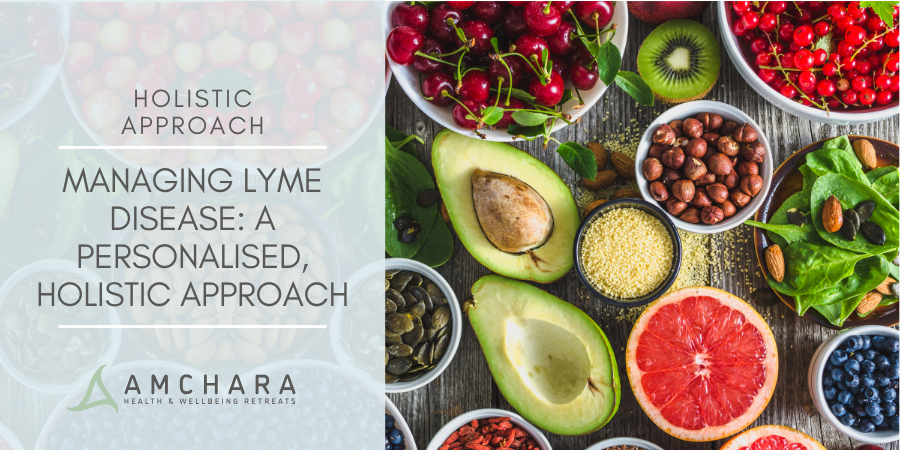Surges and dips in your blood sugar levels may leave you tired, jittery, headachy and craving sugar. Uncontrolled sugar levels can tire out the pancreas and increase your risk of developing Type 2 diabetes.
We always take an evidence-based approach and in this article we’ll explore how fasting may help control blood sugar levels.
Fasting – the key to blood sugar control?
The time-tested tradition of fasting has been practiced for millennia and plays an important role in many cultures and almost all religions.
More recently fasting has been found to stimulate the body’s self-cleaning mechanisms. If these processes are inefficient, it’s believed we are more likely to suffer from metabolic syndrome, as well as neurodegenerative diseases such as Alzheimer’s disease and Parkinson’s. Additionally, recent research has linked fasting to improved blood sugar control.
Fasting involves complete abstinence of any type of food for a set period, with only water being drunk. This is what’s meant by a water fast. Although we may tend to think of fasting as something undertaken for a whole day or even a period of days, there are many different ways of fasting, including going without food only for certain hours each day, which we’ll talk about later.
What happens when we fast?
Complete abstinence of food brings about certain chemical changes in the body. These are processes which are suppressed when we eat.
Our body needs a constant supply of energy, but we only eat at certain times, so we have evolved mechanisms to store the energy in food to use at a later time.
After we eat, energy in the form of glucose enters the blood, so insulin is released to allow the glucose to enter body cells to be used for metabolism. If it’s not immediately needed, it can be stored in the liver, or muscle or fat cells to be used later.
Around five hours after eating the body enters the post absorptive or fasting state, when all food has been digested, absorbed and stored away. Glucose levels in the blood will naturally drop as the cells use it for fuel. During this phase the body will draw on energy stored as glycogen in the liver and muscles for fuel to keep blood glucose levels stable. It’s important to do this as the brain is very reliant on blood sugar being steady.
Once the temporary energy supply provided by glycogen is exhausted, the body switches to using fat as fuel, and insulin levels will reduce. In general, it will take between 12 and 15 hours to change completely to fat burning. This is known as the fasting state.
If we are constantly grazing, the body never has a chance to enter the fasted state and burn off stored fat, which is why fasting is so successful for weight loss. Even though losing weight in itself can help control blood sugar, fasting can also have other beneficial effects independent of any weight which may be lost.
Types of fasting
There are many kinds of fasts, from restricting eating to a set number of hours per day to limiting the amount of solid food or calories consumed on certain days. Strictly speaking, restricting calories does not constitute fasting, but you’ll often see it referred to as such.
The different patterns of eating, frequently referred to as fasting, can be confusing, so here’s a summary of a few of the different sorts of fasts you may read about.
- Water fasting
This involves eating no food at all, and no juices or drinks except water for a specific period.
- Intermittent fasting and time-restricted eating (TRE)
This involves certain periods with no food at all, usually on specific days of the week or during set hours in the day. In the latter case it’s also referred to as time-restricted eating. In other words, all eating occurs during a set time period or eating window. Your normal daily food is eaten, but over a shorter time period.
It’s gained popularity in recent years, partly because it’s an easy type of fasting to fit into a daily routine.
The 16:8 and 20:4 diets are examples of time-restricted eating. The numbers refer to the eating window in hours. So on the 16:8 diet you’d be eating during an eight hour window and fasting for the other 16.
Often the time of day of the eating window is not specified, although it makes sense to fast overnight because our bodies have evolved to eat food during daylight hours and to sleep, as well as fast, at night. If the fasting window includes the time you spend asleep, time-restricted eating is quite simple to incorporate into your day.
An extension to intermittent fasting, known as circadian time-restricted eating, involves timing the eating window to your circadian rhythm. Early time-restricted eating specifies that food is eaten earlier in the day, starting with an early breakfast and having the last meal mid-afternoon, and late time-restricted eating involves food being eaten in the later part of the day, typically starting with lunch and finishing with an evening meal.
- Modified fasting
A modified fast is when the quantity of food eaten is restricted for a period of time. The popular 5:2 diet, which restricts calories on two days per week, is an example of a modified fast. It’s not strictly speaking fasting, as some food is eaten every day, but it’s popularly referred to as a type of fasting.
A usual amount of food is eaten five days per week with calorie intake restricted to one quarter of the daily energy needs on the other two days. In practice this means around 600 calories per day for men and 500 for women, on any two days per week, which need not be sequential.
Fasting and your blood sugar
If you’ve ever experienced the physical effect of swings in blood glucose, it may seem counterintuitive to go without food for extended periods. When blood sugar drops, the brain sends a very strong message for you to eat. This is because it is dependent on glucose for energy and extremely sensitive to any minute changes in blood sugar levels. Your brain will tell you to eat, preferably something sweet, to provide it with immediate energy.
This led to the belief that snacking is beneficial in balancing blood sugar levels by providing the brain with this energy. For years we were told to graze for balanced energy throughout the day.
However, recent advances in our knowledge about the body’s physiology during fasting has led to the understanding this may not always be the best approach.
This is because science is now telling us fasting can improve how our body’s cells respond to insulin as well as regulate insulin levels. Insulin is the hormone which enables sugar in the blood to be taken into cells to be used as energy and is one way the body stabilises sugar levels after eating.
Insulin isn’t the only hormone involved in blood sugar control. During fasting, fat cells in the body release a protein hormone called adiponectin and a lack of this substance has been linked with insulin resistance.
Insulin resistance happens when the body’s cells no longer listen to the message insulin is trying to deliver, so more and more of the hormone has to be pumped out by the pancreas in order to keep blood sugar stable. Insulin resistance is strongly linked with the development of Type 2 diabetes.
It’s believed receptors for adiponectin on the surface of cells can become desensitised, particularly in the case of obesity (1). This is one mechanism by which fasting may make our cells more sensitive to insulin.
Intermittent fasting and blood sugar balance
Going without food for certain windows during a 24 hour period has been found in studies to reduce fasting glucose levels and improve insulin resistance.
We know our circadian rhythm affects how sensitive our cells are to insulin. We are generally less sensitive to insulin in the evenings, and sensitivity to the hormone decreases steadily throughout the day. This means if we eat at night our blood sugar levels will increase more than if we had eaten the same meal earlier in the day.
This has led scientists to look specifically at early time-restricted eating. Pre-diabetic men who ate only during a six hour window with dinner before 3pm were found to have improved insulin sensitivity, compared to other men who ate within a 12 hour time window (2). Results were seen after only 5 weeks of time-restricted eating.
Interestingly, study participants didn’t feel hungry even when they were fasting. The improvement in insulin sensitivity occurred independently of any weight loss.
Even fasting during daylight hours, a religious practice during Ramadan which would appear to be counter-intuitive to our circadian rhythm, has been found to improve glucose control. Ramadan fasting is an extreme type of fast in which no liquid or food is taken from sunrise to sunset.
Scientists found increases in certain proteins which reduce insulin resistance by repairing damage to the cells involved in the insulin response (3).
Modified fasting and your blood sugar
Reducing calories to between 500-600 two days per week has also been found to help balance blood sugar levels and decrease insulin resistance. One study which reduced calories on two consecutive days each week improved glucose control, even when Type 2 diabetes had already developed.
Takeaway
If you would like to explore fasting, it can be less daunting with guidance of a Personalised Health practitioner. Many people combine fasting with a stay at a health retreat, an ideal way to kickstart healthy habits in a supportive environment.
Please note any type of fasting can increase the likelihood of low blood sugar. For this reason, if you have diabetes and are interested in trying out fasting, you should consult with your doctor first, and preferably only undertake a fast under the guidance of an experienced practitioner.
You should not make any changes to your diabetes medication without consulting your GP, and Type 1 diabetics should not undertake fasting.
Fasting is not suitable for everyone, especially children, pregnant women or nursing mothers or anyone with an eating disorder.
Did you find this article useful? We would love to know your thoughts.
Have you ever tried fasting? How did it affect your blood sugar balance?
We’d love to hear about your journey.
Read this next:




